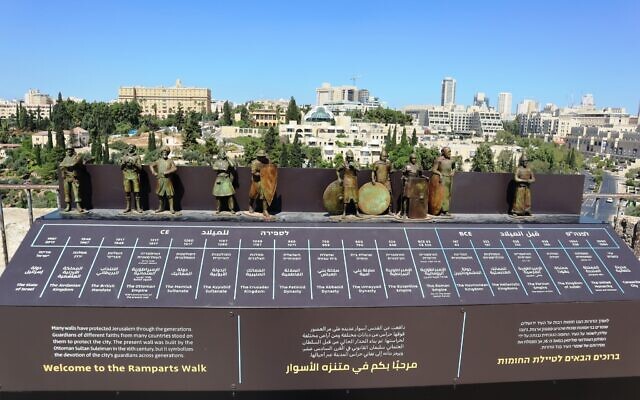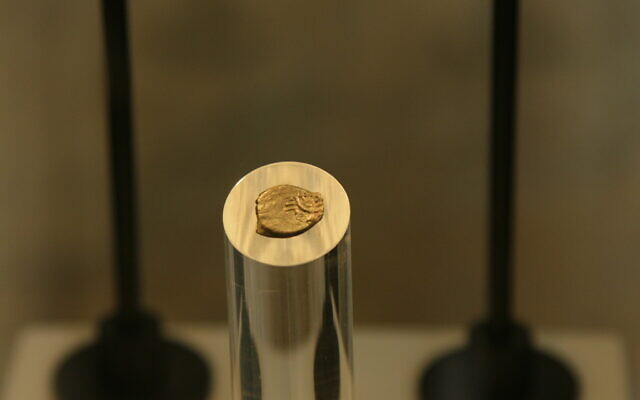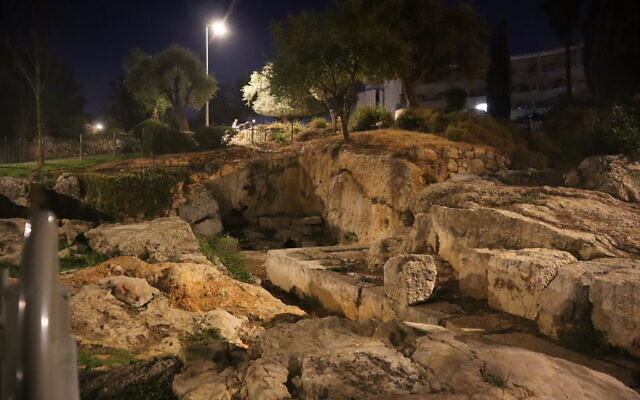The Bible tells us that workers preparing blocks for Solomon’s Temple did so inside a Jerusalem quarry and without utilizing even a single iron tool (1 Kings 6:7). So how did they cut the stone they needed for arguably the most magnificent temple in the entire ancient world?
Over the centuries, Jewish sources suggested that Solomon brought a stone-eating worm called shamir to the quarry, a creature that could bore through rocks. And perhaps they were right. In 2019, scientists discovered a strange species of shipworm in the Philippines that lives within a small stretch of the Abatan River and can actually cut through stone. Its Latin name: lithoredo abatanica.
To hear the story and to watch an artist’s vision of the shamir at work, join a tour through Zedekiah’s Cave. The cave opened with a brand-new multimedia production at the beginning of August and offers visions, mysterious lights and strange sightings under a very ghostly aura.
Wearing audio guides available in English, Arabic and Hebrew, visitors experience lights, sounds, and colors that bring biblical tales and legends to life. Watch as cherubs and angels fly through the cave, and follow King Zedekiah as he flees from the Babylonians.
(The lithoredo abatanica can not and does not exist in our part of the world. So is it all a myth? Maybe not. According to marine biologist Dr. Shevy Rothman, the Mediterranean Sea hosts a very special shell that can cut through stone.)
The Jerusalem ramparts
From the shadowy visions of Zedekiah’s cave to the reality that is Jerusalem with a new and fascinating twist: Life-sized figures sitting and crouching on the ramparts of the Old City make Jerusalem’s history both touching and fun — all in front of the backdrop of what must be one of the world’s most stunning views.
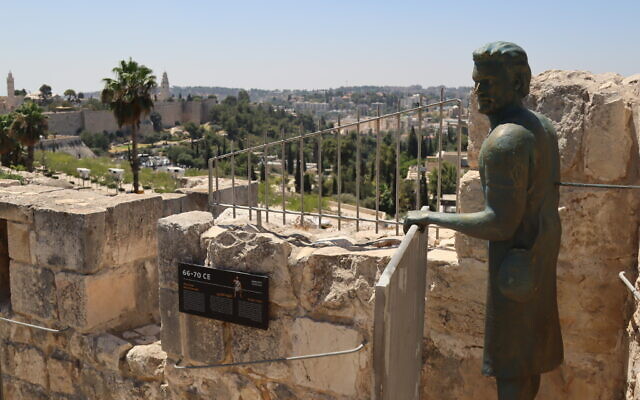
A statue of a Jewish guard from the times of the Great Revolt on the Jerusalem Ramparts. (Shmuel Bar-Am)
You can experience the ramparts figures in several different ways: explore the figures themselves while taking selfies, read the signs, watch as the figures sing, dance, and tell stories with the help of augmented reality animation, or take part in a game whose end result is a group picture of you, the visitor, with miniature figures.
A celebrated war historian was consulted on the figures’ design, so the clothing and the weapons they carry are compatible with eras ranging from Byzantine times to the Six Day War.
All the stories, while products of the creators’ imaginations, were inspired by real-life historical events. A crusader figure cries at the loss of queen Melisandre — beautiful and beloved by many (especially men) in one story; in another, we hear about 10-year-old Nissim Gini, who volunteered to fight during Israel’s 1948 War of Independence. In yet another, one of the workers who built the current wall around the Old City tells us how it was done.
The figures are brought to life with the help of the Ramparts Walkway app, available free on cell phone play stores. Incredibly, even relative dinosaurs like us managed to activate the app.
Half of the figures are found on the Southern Wall, accessible by the steps next to Zedekiah’s cave and ending at the Jaffa Gate (or you can begin at Jaffa Gate and end at the cave). The remaining figures are located on the Northern Wall, from the Jaffa Gate to the Dung Gate. A word of caution, however; you must have good balance and be able to easily both ascend and descend a great number of stops to follow either of these walks.
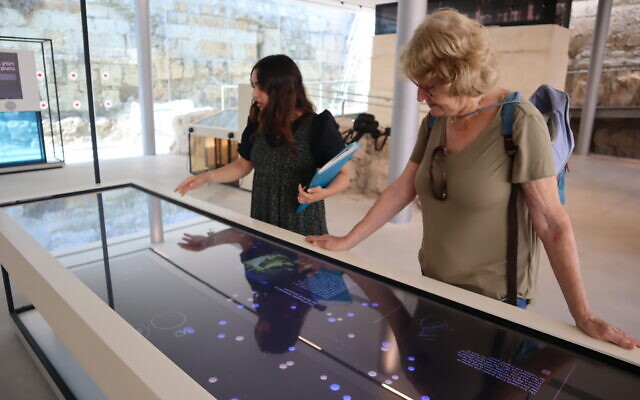
An interactive table featuring riddles and prayers at the Davidson Museum in Jerusalem. (Shmuel Bar-Am)
The Davidson Museum
If you finish up at the Dung Gate or are not able to do the ramparts, there is more in store at the newly remodeled Davidson Museum. Part of the Jerusalem Archeological Gardens, it is located right inside the Dung Gate and next to a coffee shop. Situated in part within the ruins of a 7th-century Umayyad palace, the museum is beautifully designed and completely accessible, and aims at showcasing Jerusalem as the center of the world.
Along with five short animated videos whose subjects range from pilgrimages and the Temple Mount to the significance of the menorah — the magnificent seven-branched candelabra that was a centerpiece of the Temple and has become a symbol of the Jewish people — the museum boasts several rooms filled with authentic artifacts.
Our guide to the museum, Yonat Sarah Ben Horrin, pointed out a First Temple Period ostracon bearing an inscription engraved with the word Jerusalem. She also showed us a piece from Jason’s Tomb in Jerusalem, dating back to the first century BCE and featuring an etching of a menorah, and a coin printed by a Hasmonean (Maccabee) king during the first century BCE that is strikingly similar to Israel’s modern 10-agora coins.
Also on display is the original Magala Stone. It was discovered in a first-century synagogue and apparently decorated by an artist who had made a pilgrimage to the Temple.
A favorite aspect of the museum is the last room, filled with hands-on technology. You can view a lovely animated book containing the discoveries of Charles Warren, an engineer and 19th-century archeologist whose explorations are legion. Or pick a song about Jerusalem, like one of Yehoram Gaon’s classics or Don McLean’s “By the Waters of Babylon.”
You can also spin a wheel and find out what your horoscope meant to the ancients, and watch a wonderful animation that thoroughly explains the Foundation Stone, from its beginning to where it is today. If you like, when you finish the museum, you can leave a message telling future visitors what Jerusalem means to you.
The Jerusalem Lights Tour
We welcome back another Jerusalem favorite, the Lights Tour, taking place Sunday through Thursday nights in summer, and on Sunday and Thursday the rest of the year. The buses are new, with large windows, and include guides in English and Hebrew.
Click here for information and tickets to the Ramparts Walk, Zedekiah’s Cave, and the Lights Tour. It is possible (and less expensive) to walk through the cave without the multi-media production.
The Davidson Museum is open Sunday through Thursday from 9:00 a.m. to 6 p.m. and until 2 p.m. on Fridays.
Aviva Bar-Am is the author of seven English-language guides to Israel.
Shmuel Bar-Am is a licensed tour guide who provides private, customized tours in Israel for individuals, families and small groups.
